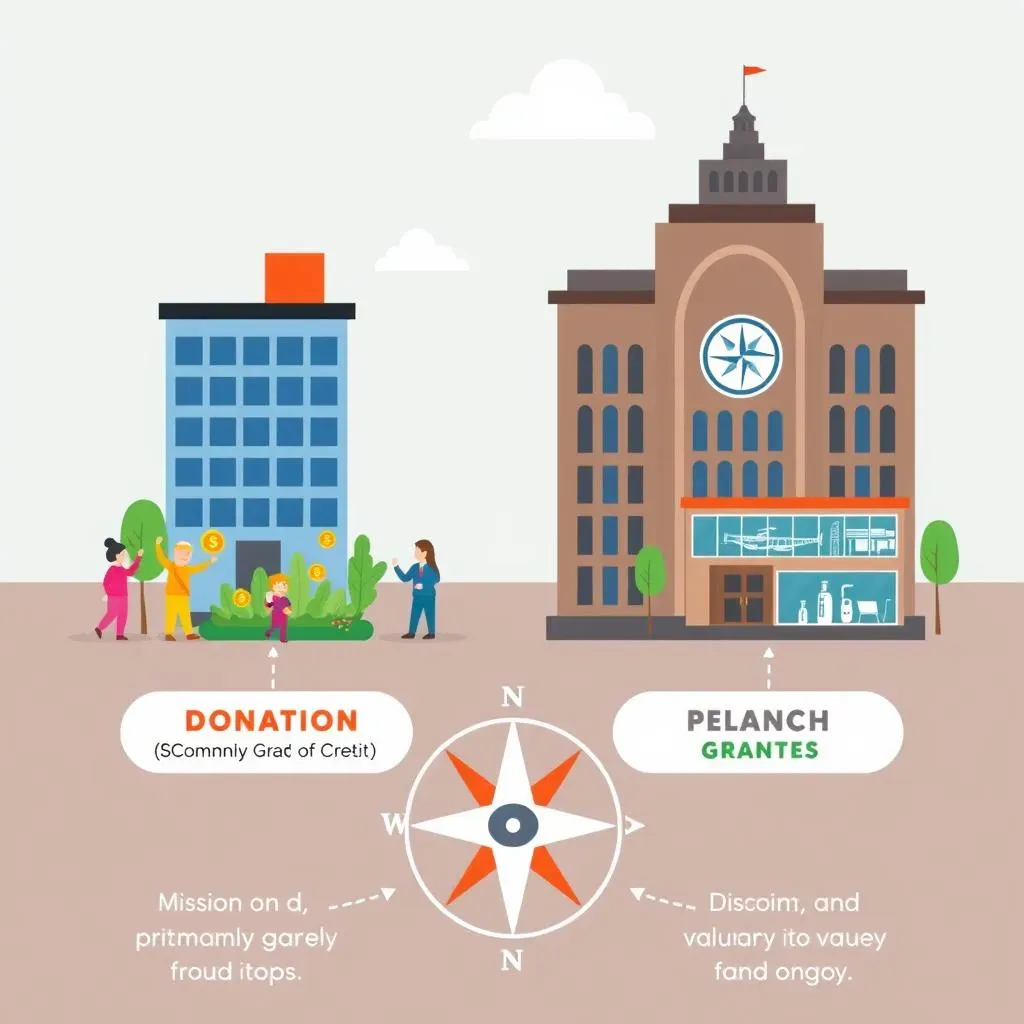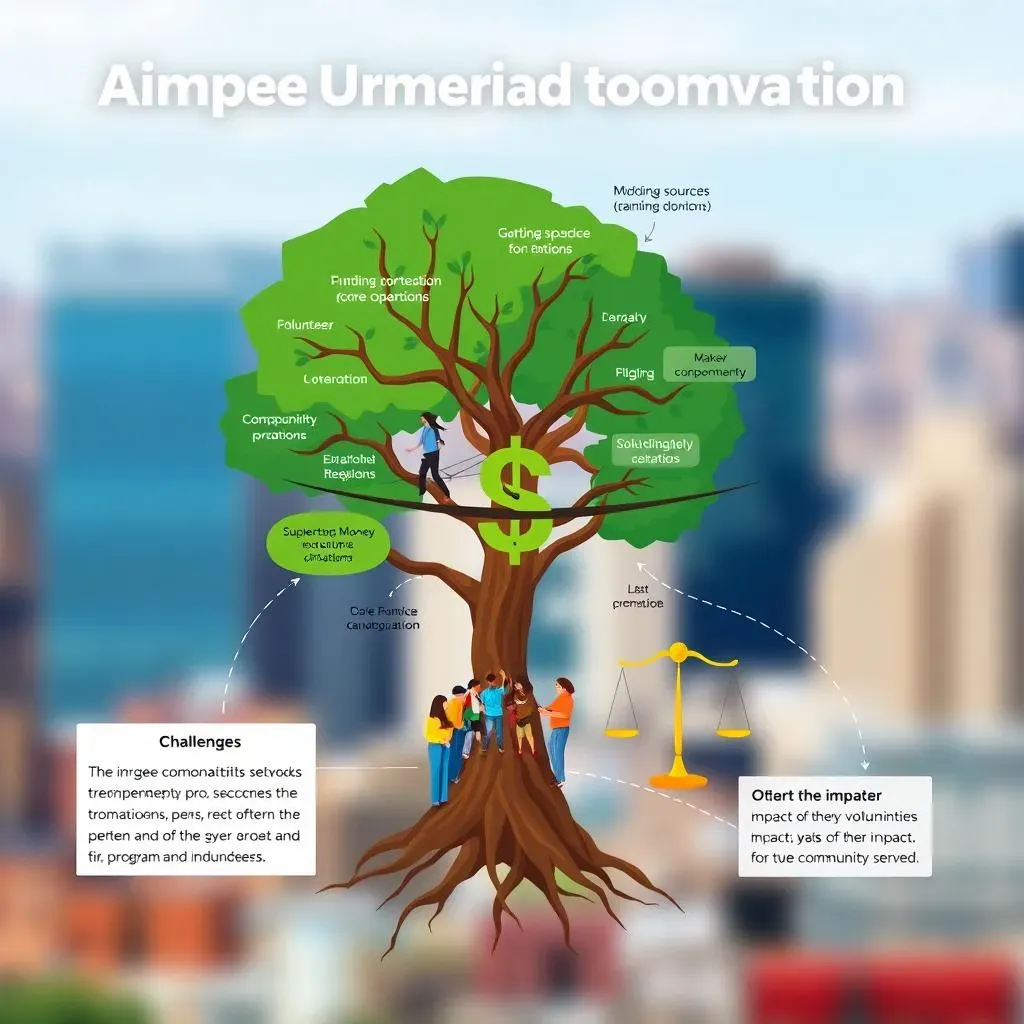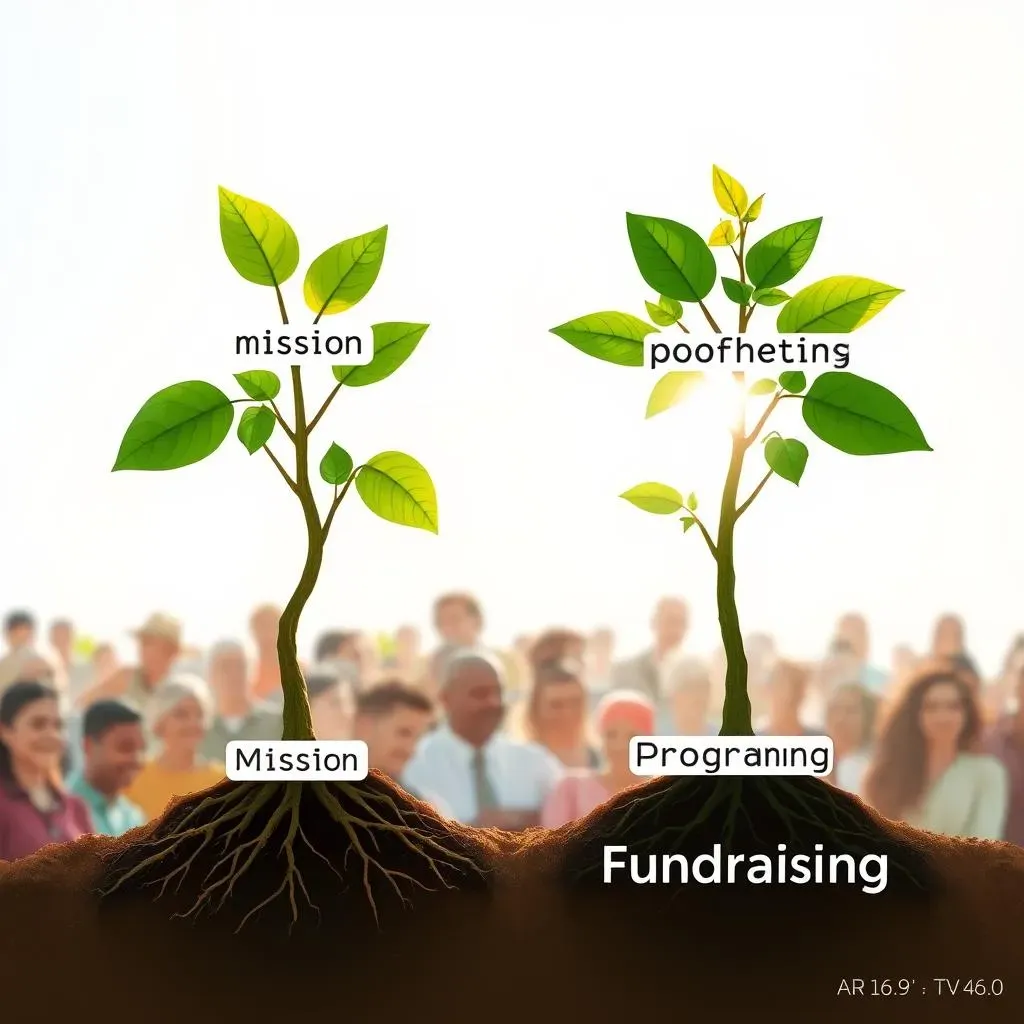Table of Contents
Ever wondered how some groups dedicate themselves to causes without chasing profits? That's the world of **2 nonprofit organizations**. These entities are the backbone of so much good in our communities, tackling everything from environmental protection to education and healthcare. But what exactly are they? How do they differ? And what makes them tick? This article dives into the essentials of **2 nonprofit organizations**, exploring their diverse structures, funding models, and the critical management strategies they employ to make a real impact. We'll compare different types, discuss their unique challenges, and even touch on how you might get involved or even start your own. Ready to understand the nuts and bolts of these vital community players? Let's get started and unpack the world of nonprofits.
Understanding 2 Nonprofit Organizations: Types and Structures

Understanding 2 Nonprofit Organizations: Types and Structures
Defining the Nonprofit Landscape
Let's kick things off by getting clear on what we mean by **2 nonprofit organizations**. Basically, these are groups formed to serve a public or social purpose, not to make money for owners or shareholders. Think about it – they're all about the mission, not the profit margin. This covers a huge range, from your local animal shelter to massive international charities tackling global health crises. The key is their commitment to using any surplus revenue to further their goals, rather than pocketing it.
You'll find **2 nonprofit organizations** operating in just about every sector imaginable. Education? Loads of nonprofits. Healthcare? Ditto. Arts and culture, environmental conservation, social services – you name it, there's likely a nonprofit working in that space. This variety is one of the things that makes the nonprofit world so dynamic and vital. It’s not just one size fits all; there’s a ton of diversity in what they do and how they’re set up.
Varieties in Nonprofit Types
Now, when we talk about types of **2 nonprofit organizations**, it’s helpful to think about different classifications. One common way to categorize them is by their primary purpose. Are they focused on charity, education, religion, or something else? In the US, for example, the IRS has a system of categories under section 501(c) that defines different types of tax-exempt organizations. This legal framework really shapes how they operate and what kind of activities they can engage in.
Another way to think about it is by scale and scope. You've got grassroots community groups working on hyper-local issues, and then you have national or international NGOs with budgets in the millions, even billions. The structures and operational complexities will naturally vary wildly between a small volunteer-run organization and a large, professionally staffed one. Both are nonprofits, but their day-to-day realities are worlds apart.
Type of Nonprofit | Primary Focus | Examples |
|---|---|---|
Charitable Organizations | Relief of the poor, distressed, or underprivileged | Food banks, homeless shelters, disaster relief organizations |
Educational Organizations | Education or instruction of the public | Schools, universities, museums, libraries |
Religious Organizations | Religious activities and worship | Churches, mosques, synagogues, temples |
Scientific Organizations | Scientific research for the public interest | Research institutes, science museums |
Legal and Organizational Structures Unpacked
Delving deeper into structures of **2 nonprofit organizations**, you'll find they can be organized in various legal forms. In the US, the most common is the nonprofit corporation. This provides legal protections similar to for-profit corporations, but with the core principle of serving a public benefit. They have boards of directors or trustees who oversee governance and ensure the organization stays true to its mission. These boards are crucial for accountability and strategic direction.
Beyond corporations, you might also see nonprofits structured as trusts or associations, depending on local laws and the organization's specific needs. The chosen structure impacts everything from liability to tax status and how the organization can raise funds. It's not always the most glamorous part of nonprofit work, but understanding these structures is essential for anyone wanting to really grasp how these organizations function and thrive – or sometimes struggle.
Comparing 2 Nonprofit Organizations: Funding and Mission

Comparing 2 Nonprofit Organizations: Funding and Mission
Diverse Funding Models in Nonprofits
When you start looking at how **2 nonprofit organizations** get their cash, you realize it's not a one-size-fits-all situation. Funding streams are super diverse, and it really shapes what they can do and how they operate. Some lean heavily on individual donations, think your local public radio station or the animal shelter sending out appeals. Others might get big chunks of their budget from government grants, especially if they're working on public health or social services. And then there are those who rely on foundation grants, getting support from private philanthropic organizations focused on specific areas like education or environmental issues. It’s like a puzzle, and each nonprofit puts together their funding picture in a unique way.
You also see nonprofits getting creative with earned revenue strategies. Museums charging admission, universities with tuition fees, or even nonprofits running social enterprises that sell products or services to support their mission. This mix of funding sources can be pretty strategic. Relying too much on one source can be risky, so diversifying income streams is often a smart move for long-term stability. It's all about keeping the lights on and the programs running, while staying true to that core nonprofit purpose.
Mission Drives the Money: Aligning Goals and Resources
The mission of **2 nonprofit organizations** isn't just some feel-good statement on their website; it's the compass that guides everything, including their funding strategy. The programs and activities they undertake to fulfill their mission directly dictate the kind of resources they need and where they go looking for funding. An environmental group focused on land conservation will likely target different funding sources than a nonprofit running after-school programs for underprivileged kids. The mission is the anchor that keeps the fundraising efforts focused and relevant.
Think about it – a nonprofit dedicated to medical research might heavily pursue grants from health-focused foundations and government agencies like the National Institutes of Health. Meanwhile, a community arts organization might focus on individual donors, local business sponsorships, and maybe some arts council grants. The point is, the mission dictates the money chase. It’s a really direct link: what they're trying to achieve shapes how they fundraise and manage their resources. It's mission first, money follows – ideally, anyway.
Funding Source | Examples of Nonprofits that Utilize | Typical Characteristics |
|---|---|---|
Individual Donations | Local charities, religious organizations, advocacy groups | Often relies on grassroots support, can be unpredictable, strong community engagement |
Government Grants | Social service agencies, public health organizations, research institutions | Competitive, project-based, tied to specific public priorities, can be bureaucratic |
Foundation Grants | Arts organizations, environmental groups, educational nonprofits | Varies widely by foundation focus, often strategic and impact-driven, requires alignment with foundation goals |
Earned Revenue | Museums, universities, social enterprises | Provides more stable income, can diversify funding, needs business acumen, potential mission drift concerns |
Managing 2 Nonprofit Organizations: Challenges and Strategies

Managing 2 Nonprofit Organizations: Challenges and Strategies
Balancing Mission and Money: The Tightrope Walk
Alright, so you're in charge of a nonprofit – awesome! But let's be real, managing **2 nonprofit organizations** is no walk in the park. One of the biggest headaches? Constantly balancing the mission with the money. You're driven by this amazing cause, right? But good intentions don't pay the bills. There's this constant tension between doing the most good you can and making sure you have enough resources to actually do it. It's like walking a tightrope – you're always adjusting, trying to keep everything in equilibrium. You need to be passionate about the cause, but also super practical about finances. No easy feat!
Think about it – you might have this incredible program idea that could change lives, but then the reality of funding hits. Grant applications, donor appeals, budget meetings – suddenly you're spending half your time not directly on the mission, but on making sure the mission is even possible. It's a necessary evil, but it can be draining if you're not prepared for it. Successful **2 nonprofit organizations** are the ones that find that sweet spot, where mission and financial sustainability work hand in hand, not against each other.
Volunteer Power and People Management Puzzles
Another big piece of the puzzle in managing **2 nonprofit organizations** is people – especially volunteers. Volunteers are the lifeblood of so many nonprofits, giving their time and energy for free. It’s incredible, but also comes with its own management challenges. Unlike paid staff, you can't exactly 'manage' volunteers in the same way. It's more about inspiration, motivation, and keeping them engaged. Burnout is real, and volunteer turnover can be high if people don't feel valued or see their impact.
Then there's the staff side. Nonprofit salaries often aren't competitive with the private sector, which means you're often relying on people who are deeply committed to the cause, sometimes even taking a pay cut to be there. Managing staff in this environment means really focusing on creating a positive, supportive work culture, recognizing their contributions, and providing opportunities for professional growth, even with limited resources. It’s about leading with empathy and understanding, while still driving towards ambitious goals.
Challenge | Strategy |
|---|---|
Balancing Mission and Money | Diversify funding, strategic budgeting, earned revenue streams |
Volunteer Management | Clear roles, recognition programs, regular communication, impact measurement |
Staff Retention | Competitive benefits (if possible), professional development, positive work culture, mission alignment |
Measuring Impact and Staying Accountable
Finally, let's talk about impact. How do **2 nonprofit organizations** know if they're actually making a difference? Measuring impact and staying accountable is crucial, both for internal improvement and for demonstrating value to donors and the public. It’s not always straightforward, especially for organizations dealing with complex social issues. Quantifying things like 'community well-being' or 'environmental health' can be tricky, but it's essential to try.
More and more, funders want to see data and evidence that their money is making a difference. This means nonprofits need to get good at setting measurable goals, tracking progress, and evaluating their programs. Transparency is also key. Being open about your finances, your activities, and your impact (or lack thereof) builds trust and credibility. It's all part of being a responsible steward of public and donor funds. Plus, honestly assessing your impact helps you learn, adapt, and become even more effective in the long run. It's a win-win.
Launching 2 Nonprofit Organizations: Key Steps to Success

Launching 2 Nonprofit Organizations: Key Steps to Success
Nailing Your Nonprofit's Core Idea and Legal Base
So, you're thinking about starting **2 nonprofit organizations**? Awesome! First things first, you gotta nail down your core idea. What problem are you actually trying to solve? Who are you trying to help? Get super specific. "Helping people" is way too vague. Is it providing job training for single moms in your town? Protecting a specific endangered bird species? The clearer your mission, the easier it'll be to get others on board – donors, volunteers, even staff down the line. Think of it as your nonprofit's North Star – everything else will align around it.
Once you've got that mission crystal clear, it's time for the less glamorous but totally crucial legal stuff. You'll need to decide on a legal structure – usually incorporating as a nonprofit is the way to go in the US. This means paperwork, folks. Articles of incorporation, bylaws, all that jazz. Don't skimp on this part. Getting your legal ducks in a row early on saves you massive headaches later. Plus, it's essential for getting that sweet, sweet tax-exempt status from the IRS. Nobody wants to run a nonprofit and then pay taxes like a for-profit business, right?
Building Buzz and Getting the Ball Rolling Operationally
Alright, mission and legal stuff sorted? Nice work! Now for the fun part – actually getting your **2 nonprofit organizations** off the ground. This is where you start building buzz and getting operational. Think about your initial programs or activities. Start small, but aim for impact. Pilot projects are your friend. Test out your ideas, see what works, what doesn't, and tweak as you go. Don't try to boil the ocean on day one. Better to do one thing really well than ten things kinda poorly.
And of course, you can't ignore fundraising from the get-go. Even if you're starting scrappy, you need some cash flow. Start tapping your network – friends, family, people who believe in your mission. Small donations add up! Think about crowdfunding, local events, maybe even some initial grant applications if you're feeling ambitious. The key is to start building a community around your nonprofit – people who are invested in your success, not just financially, but emotionally too. Passion is contagious, so spread it around!
Key Step | Action Items |
|---|---|
Solidify Core Idea | Define mission statement, identify target population, assess community need |
Legal Foundation | Incorporate as a nonprofit, draft bylaws, apply for tax-exempt status |
Initial Operations | Develop pilot programs, recruit volunteers, set up basic administrative systems |
Early Fundraising | Launch initial fundraising efforts, build donor network, explore grant opportunities |
Conclusion: The Enduring Impact of 2 Nonprofit Organizations
From local charities to global initiatives, **2 nonprofit organizations** form a critical part of our societal framework. They operate on diverse models, tackle varied missions, and face unique hurdles, yet their collective impact is undeniable. Understanding their structure, funding, and management is not just academic; it's crucial for anyone looking to engage with or support these vital entities. Whether you're considering donating, volunteering, or even launching your own nonprofit, recognizing the power and potential of these organizations is the first step towards making a meaningful difference in the world. They are more than just organizations; they are movements of people dedicated to positive change, driven by purpose, not profit.
